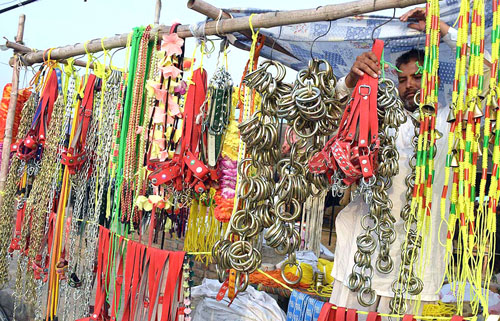City Reporter
The sale of sacrificial animals and their decorative items is witnessing rise in the twin cities of Rawalpindi and Islamabad as the religious festival of Eid-ul-Azha is knocking on the door.
Decorating the sacrificial animals with ornamental items is a popular trend amongst the people especially children before the festival.
Traditional decorative items available in cities like Multan, Sahiwal, Kasur and interior Sindh are brought to different cities and are available in and around cattle markets of twin cities.
“I have been selling animal ornaments for the past many years.
I usually sit beside different cattle markets where most of the people visit and keep on moving from one place to another to grab more and more customers, Ali Khan, a vendor said.
Talking to media, he said, “Youngsters especially children are more inclined to visit the stalls of decorative items as they wanted to decorate their sacrificial animals with latest garland available in the markets”.
He said the prices of garlands, anklets, bells and facial ornaments with flowers and garlands ranges between Rs. 200 to Rs. 400 while the decorative cloth to cover the animal costs from Rs. 1500 to Rs. 3000 depending on the size.
Ahmad, a 14-year old buyer at a decorative items stall in cattle market of Rawalpindi said, “We are here to buy colourful garlands, crown and “payals” for our cow but the prices are so high that we even can’t buy all the desired items”.
“Following the Sunnat-i-Ibrahimi, we want to decorate our sacrificial animal at the best but high prices of such items make it difficult for us to fulfill our wishes”, he said.
Noor Ameen, a 65 years old buyer said, “I have spent already my maximum savings in buying my desired cattle as the prices were much higher as compared to the last years”.
“Now my grand children are demanding to buy decorative items but sellers are not ready to give any discount.
Spending so much money on such things which will be useless after the ritual of sacrifice is unreasonable”, he said.
The sellers use to increase prices of such items considering the rising demand on their own and they know the fact that parents are usually forced by their children for such useless expense, he said.










